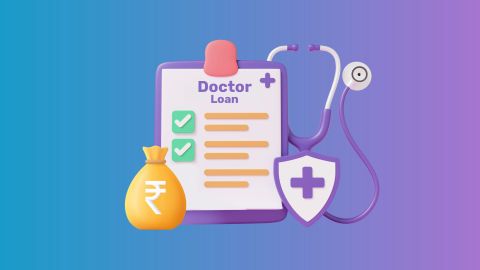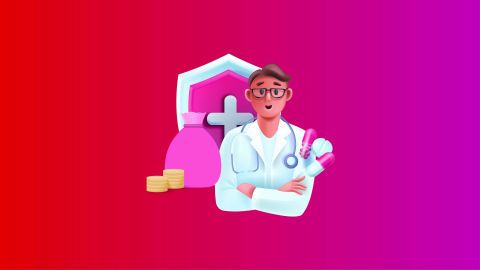An Implantable Cardioverter Defibrillator (ICD) is a critical medical device designed to identify and correct life-threatening heart rhythm abnormalities that could result in sudden cardiac arrest. This overview outlines how ICDs function, the various types available, who might require one, their benefits and potential risks, along with recent technological advancements. It serves as a helpful guide for patients and caregivers to make informed choices about heart rhythm management and treatment options.
What is an Implantable Cardioverter Defibrillator (ICD)?
An Implantable Cardioverter Defibrillator (ICD) is a compact, battery-operated device implanted in the chest to monitor heart rhythm and deliver an electric shock when it detects a dangerous, potentially fatal arrhythmia. It continuously tracks the heart’s electrical signals and can restore a normal rhythm if conditions like ventricular tachycardia or ventricular fibrillation occur. Unlike a pacemaker—which primarily addresses abnormally slow heart rates—an ICD is specifically designed to correct fast, life-threatening heart rhythms.
Implantable Cardioverter Defibrillator vs. Pacemaker
Feature |
Implantable Cardioverter Defibrillator (ICD) |
Pacemaker |
Purpose |
Treats life-threatening arrhythmias |
Manages slow heart rhythms |
Function |
Delivers shocks to restore normal rhythm |
Sends electrical impulses |
Detection |
Detects and corrects rapid heartbeats |
Regulates slow heartbeats |
Use case |
Ventricular fibrillation and tachycardia |
Bradycardia |
Emergency response |
Provides immediate response to dangerous rhythms |
Maintains regular heart rate |
Installation |
More complex, requires thorough monitoring |
Simpler, routine procedure |
Types of implantable cardioverter defibrillator machine
There are four main types of implantable cardioverter-defibrillators (ICDs):
- Single-chamber: Utilizes a lead connected to the right ventricle to administer energy if necessary.
- Dual-chamber: Employs leads attached to both the right atrium and the right ventricle.
- Biventricular: Provides cardiac resynchronization therapy by using leads in the right atrium, right ventricle, and left ventricle, particularly beneficial for heart failure patients.
- Subcutaneous: Monitors heart rhythm using wires placed just below the skin above the heart, reducing the risk of serious infections, yet incapable of pacing the heart out of dangerous rhythms, relying solely on shocks for arrhythmia treatment.
Understanding the various types of implantable cardioverter-defibrillators (ICDs) is crucial for patients and healthcare providers alike. Each type offers unique benefits and considerations, ranging from single-chamber devices for basic energy delivery to biventricular ICDs providing cardiac resynchronization therapy for heart failure patients. Subcutaneous ICDs offer advantages such as reduced infection risks but have limitations in pacing capabilities. By considering these factors, patients and healthcare professionals can make informed decisions regarding the most suitable ICD option based on individual patient needs and medical requirements.
Read more about Defibrillator Machines.
Uses of implantable cardioverter defibrillator machine
ICDs are primarily used to prevent sudden death in patients with ventricular fibrillation or ventricular tachycardia, two types of arrhythmias that can be fatal. They are also used in patients who have survived a cardiac arrest, have a familial history of cardiac arrest, or suffer from syncope with inducible ventricular tachycardia during electrophysiological testing. These devices are vital in managing heart rhythm disorders in a long-term, continuous basis.
Benefits of implantable cardioverter defibrillator machine
- Prevents sudden death: Automated external defibrillators(AEDs) are designed to detect and treat arrhythmias, abnormal heart rhythms, which can lead to sudden cardiac arrest. By delivering a shock to restore normal heart rhythm, AEDs can prevent sudden death, providing a vital lifeline in emergency situations.
- Continuous monitoring: AEDs offer round-the-clock heart monitoring, constantly scanning for irregular heart rhythms. This continuous surveillance ensures prompt detection and intervention in case of any abnormalities, offering ongoing protection against potentially life-threatening heart conditions.
- Improved survival rates: Studies have shown that prompt defibrillation with AEDs significantly increases the chances of survival for individuals experiencing severe heart conditions or sudden cardiac arrest. By delivering timely treatment, AEDs can help restore normal heart function and improve overall survival rates in critical situations.
- Peace of mind: For patients with heart conditions and their families, having an AED in place provides invaluable peace of mind. Knowing that there is a device readily available to deliver life-saving treatment in case of an emergency can alleviate anxiety and fear, allowing individuals to live with confidence and reassurance.
Risks of an Implantable Cardioverter Defibrillator (ICD)
Risks associated with an ICD include both surgical complications—such as infection, bleeding, bruising, or a collapsed lung—and device-related problems like malfunction, lead issues, inappropriate shocks, or mechanical failure. Additional concerns may include reactions to anesthesia or irritation around the implant site.
Surgical and immediate risks:
Infection at the implantation site, chest bleeding or bruising, a collapsed lung during the procedure, and potential damage to blood vessels, nerves, or heart valves during lead placement. Some patients may also experience adverse reactions to anesthesia.
Long-term and device-related risks:
Possible device malfunction, lead displacement or fracture, unintended shocks, electromagnetic interference from external devices, movement of the ICD causing tissue irritation, and ongoing discomfort—particularly in the case of subcutaneous ICDs.
How does an ICD work?
- Detection: Monitors heart rhythms to detect irregular activity.
- Decision: Determines if the irregularity should be corrected using electrical shocks.
- Intervention: Delivers a controlled electric shock to restore normal heart rhythm.
- Monitoring: Continuously checks for further irregularities to ensure stability.
When is an ICD used?
An ICD is typically used in patients who are at high risk of ventricular arrhythmias and sudden cardiac death. This includes individuals with a history of heart attacks, diagnosed ventricular tachycardia or ventricular fibrillation, and those with congenital heart defects likely to cause life-threatening arrhythmias. The device provides critical intervention during unexpected cardiac events, greatly improving patient survival rates.
Who needs an ICD?
If you have experienced a life-threatening abnormal heart rhythm or show signs of being at risk for one, you may require an implantable cardioverter-defibrillator (ICD). This device is also recommended for individuals with specific inherited conditions like Cardiomyopathy, Long QT syndrome, or Brugada syndrome, which predispose them to future heart rhythm abnormalities.
- Life-threatening abnormal heart rhythm
- Risk factors based on genetic predispositions such as Cardiomyopathy, Long QT syndrome, or Brugada syndrome
- Heart failure patients susceptible to life-threatening heart rhythms may benefit from cardiac resynchronization therapy with a defibrillator (CRT-D).
- CRT-D synchronizes ventricular contractions, reducing the risk of arrhythmias.
Advances in ICD Technology
Recent advancements in implantable cardioverter-defibrillator (ICD) technology have aimed to make these devices smaller, safer, and more efficient. Innovations such as extravascular and subcutaneous ICDs help reduce complications associated with traditional transvenous leads. Modern ICDs now offer longer battery life, more accurate arrhythmia detection and treatment, advanced programming options, and remote monitoring capabilities—enhancing reliability, safety, and overall patient experience.
ICD vs Subcutaneous ICD
Feature |
ICD |
Subcutaneous ICD (S-ICD) |
Lead Placement |
Transvenous (wires go through veins to the heart) |
Subcutaneous (lead runs under the skin) |
Invasiveness |
More invasive because it goes into the heart and blood vessels |
Less invasive, as it leaves the heart and blood vessels untouched |
Complications |
Higher risk of lead-related complications and systemic infections |
Lower risk of infection, lead-related complications, and systemic infections |
Pacing Capability |
Can be used to pace the heart to correct slow rhythms |
Typically cannot pace the heart to correct slow rhythms |
ICD Machine Price Range
ICD Type |
Price (in INR) |
Single Chamber |
1,50,000 - 3,00,000 |
Dual Chamber |
3,00,000 - 6,00,000 |
Subcutaneous ICD (S-ICD) |
6,00,000 - 10,00,000 |
Cardiac Resynchronization Therapy Defibrillator (CRT-D) |
8,00,000 - 15,00,000 |
Implantable Loop Recorder (ILR) |
1,00,000 - 2,50,000 |
Buying guide for ICD machine
When considering an ICD purchase, assess the type of ICD (single, dual, or biventricular) that best suits the patient's needs based on their medical history and existing heart conditions. Evaluate features such as battery life, programmer compatibility, and MRI safety. Consulting with a healthcare provider to understand the specific needs and compatibility with the patient’s condition is essential for making an informed decision.
Financing options for buying ICD machines
Purchasing an ICD machine involves significant financial investment. Various financing options are available, including medical equipment loans which provide flexible repayment terms and competitive interest rates, making it easier for healthcare facilities and individuals to afford these life-saving devices.
Conclusion
ICDs are a critical component in the management of cardiac arrhythmias and preventing sudden cardiac death. With various types and configurations, choosing the right ICD requires careful consideration of the patient’s specific heart condition. Financial planning also plays a crucial role, and doctor loans can be an effective way to manage the purchase of these expensive medical devices, ensuring that patients receive the best possible care without financial strain.In the same way, hospital loans support healthcare centers in maintaining the necessary infrastructure and equipment for advanced cardiac care.




